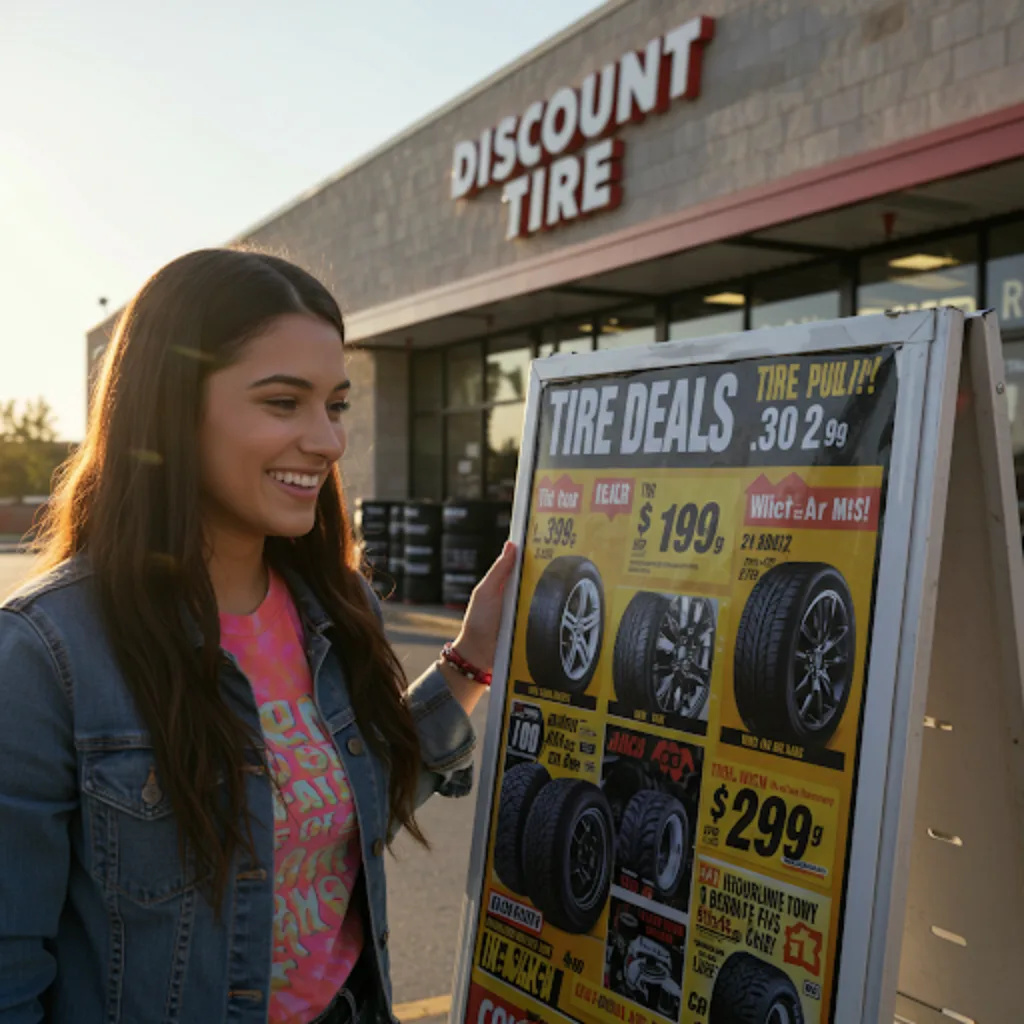
Rolling into savings: A comprehensive guide to discount tire deals
Tires are a significant investment for any vehicle owner. They’re crucial for safety, performance, and fuel efficiency. But let’s face it, they can be expensive. That’s why understanding how to find discount tire deals is essential for anyone looking to save money without compromising on quality. This guide will explore various strategies, tips, and tricks to help you navigate the world of tire discounts and secure the best possible prices.
Understanding the tire market
Before diving into specific deals, it’s helpful to understand the tire market landscape. There are numerous tire manufacturers, retailers, and online platforms, each offering a wide range of tires at varying price points. Major tire brands like Michelin, Goodyear, Bridgestone, Pirelli, and Continental often command premium prices due to their reputation for quality and performance. However, many other reputable brands, such as Hankook, Kumho, Falken, and General, offer excellent tires at more affordable prices.
The price of a tire is influenced by several factors, including:
- Tire size: Larger tires generally cost more than smaller ones.
- Tire type: Performance tires, all-terrain tires, and winter tires typically cost more than standard all-season tires.
- Brand reputation: Premium brands often have higher prices due to their established reputation and marketing costs.
- Speed rating and load index: Tires with higher speed ratings and load indices are designed for higher performance vehicles and are usually more expensive.
- Technology and features: Tires with advanced technologies, such as run-flat capability or special tread compounds, can increase the price.
Strategies for finding discount tire deals
Now, let’s explore effective strategies for finding discount tire deals:

1. Shop around and compare prices
This is the most fundamental rule of saving money on tires. Don’t settle for the first price you see. Use online comparison tools and visit multiple retailers, both online and offline, to compare prices for the specific tires you need. Check websites like Tire Rack, Discount Tire Direct, Amazon, Walmart, and local tire shops. Be sure to compare the total price, including installation, balancing, and disposal fees.
2. Look for manufacturer rebates and promotions
Tire manufacturers frequently offer rebates and promotions, especially on new tire models or during specific times of the year (like spring and fall). These rebates can be significant, sometimes offering hundreds of dollars back on a set of four tires. Check the manufacturer’s website or ask your local tire retailer about current promotions.
3. Consider buying tires online
Online tire retailers often have lower overhead costs than brick-and-mortar stores, which can translate into lower prices for consumers. Many online retailers also offer free shipping and installation partnerships with local shops. However, be sure to factor in potential shipping costs and installation fees when comparing prices. Also, research the online retailer’s reputation and return policy before making a purchase.
4. Timing is everything: Seasonal sales and holidays
Tire retailers often have sales around major holidays like Memorial Day, Labor Day, Black Friday, and Cyber Monday. These sales can offer substantial discounts on tires and installation services. Additionally, consider buying tires during the off-season. For example, you might find better deals on winter tires in the summer and vice versa.
5. Explore membership discounts
If you’re a member of organizations like AAA, AARP, or warehouse clubs like Costco or Sam’s Club, check if they offer discounts on tires. These membership programs often have partnerships with tire retailers that can provide exclusive savings.
6. Negotiate the price
Don’t be afraid to negotiate, especially at local tire shops. While online retailers typically have fixed prices, local shops may be more willing to haggle, particularly if you’re buying a complete set of tires and paying in cash. Politely ask if they can offer a better price or match a competitor’s offer.
7. Consider used tires (with caution)
Buying used tires can be a way to save significant money, but it comes with risks. If you’re considering used tires, inspect them carefully for any signs of damage, such as uneven wear, cracks, or bulges. Check the tire’s age (using the DOT code on the sidewall) and ensure it has sufficient tread depth. It’s generally recommended to buy used tires from a reputable source that offers a warranty or guarantee.
Used tires are not recommended for all vehicles, especially high powered vehicles that require tires to have great structural integrity.
8. Look for closeout deals and discontinued models
When tire manufacturers release new models, retailers often discount older or discontinued models to clear out inventory. These closeout deals can offer substantial savings on perfectly good tires. Check retailer websites and ask about closeout specials.
9. Use tire coupons and promo codes
Search online for tire coupons and promo codes before making a purchase. Websites like RetailMeNot, Coupons.com, and Groupon often have coupons for tire retailers. You might find discounts on specific tire brands, installation services, or overall purchase amounts.
10. Consider a credit card with rewards
Some credit cards offer cashback rewards or points on purchases, including tires. If you have a rewards credit card, using it to buy tires can help you earn rewards and effectively reduce the overall cost.
11. Check for package deals
Some retailers offer package deals that combine tires with other services, such as wheel alignment, balancing, and rotation. These packages can often save you money compared to purchasing each service separately.
12. Don’t forget about the extras
When comparing prices, be sure to factor in all the associated costs, including:
- Installation: This can vary significantly between retailers.
- Balancing: Essential for smooth driving and even tire wear.
- Tire disposal fees: Most retailers charge a fee to dispose of your old tires.
- Valve stems: It’s often recommended to replace valve stems when installing new tires.
- Road hazard warranty: This optional warranty can protect you against damage from potholes, nails, and other road hazards.
13. Read online customer reviews
Before buying a tire check the reviews on it to help understand the quality and performance of the tires.
Maintaining your tires for long-term savings
Finding discount tire deals is just the first step. Proper tire maintenance is crucial for maximizing their lifespan and saving money in the long run. Here are some essential maintenance tips:
- Maintain proper tire pressure: Check your tire pressure regularly (at least once a month) and inflate them to the manufacturer’s recommended pressure (found in your owner’s manual or on a sticker inside the driver’s side door). Under-inflation or over-inflation can lead to uneven wear, reduced fuel efficiency, and even tire failure.
- Rotate your tires regularly: Tire rotation helps ensure even wear across all four tires. Follow the recommended rotation pattern in your owner’s manual (typically every 5,000 to 8,000 miles).
- Get your wheels aligned: Proper wheel alignment is essential for even tire wear and optimal handling. If you notice your vehicle pulling to one side or uneven tire wear, get your alignment checked.
- Inspect your tires regularly: Check your tires for any signs of damage, such as cuts, bulges, or uneven wear. If you notice anything unusual, have them inspected by a professional.
- Drive safely: Avoid aggressive driving habits, such as hard braking and cornering, which can accelerate tire wear.
Conclusion
Finding discount tire deals requires research, patience, and a willingness to explore different options. By following the strategies outlined in this guide, you can significantly reduce the cost of tires without compromising on safety or quality. Remember to prioritize value over the absolute lowest price, and always ensure that the tires you choose are appropriate for your vehicle and driving needs. Combine smart shopping with proper tire maintenance, and you’ll be rolling in savings for miles to come.







